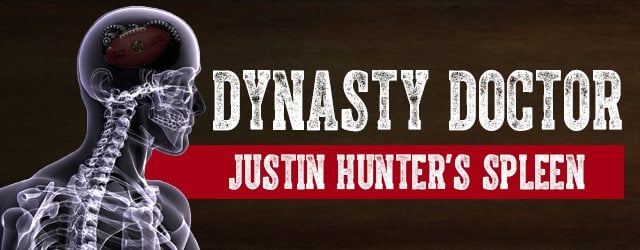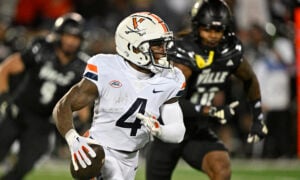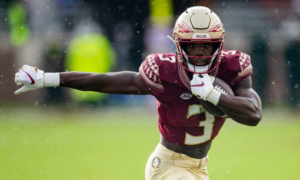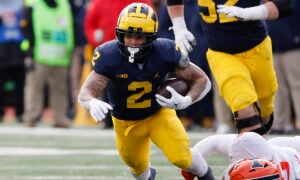The Dynasty Doctor: Justin Hunter’s Injury

Editor’s Note: Injuries are a huge part of winning and losing each year in fantasy leagues. Staying abreast of the injury situations is key as knowing what to expect from your players health-wise in the short term can help you make educated decisions in managing your team. Lucky for us, we have a Doctor in the house. Dr. Scott Peak is an ABPN board certified neurologist and neuro-oncologist. He is also a dynasty football addict and huge friend of Dynasty League Football. He’s excited to lend his expertise in medicine with hopes he may help the DLF Team and its followers better understand medical conditions and injuries that may impact NFL players and dynasty football owners.
If you have a question for The Dynasty Doctor, just click here. Please remember The Dynasty Doctor is geared towards questions regarding medical science, injuries to players and their collective impact in fantasy football. Stay tuned each week as we’ll post his thoughts each and every Tuesday.
We recently received a question regarding Tennessee Titans’ wide receiver Justin Hunter from GBDiehard asking for the chances of Hunter returning from his injury and how long he might be out. The Dynasty Doc is here to help and we will discuss Hunter’s injury and how it might impact his NFL future.
Hunter suffered a lacerated spleen week 13 in a game against the Houston Texans. He was hit in a manner consistent with a splenic laceration. Texans safety Danieal Manning hit Hunter in the left side of his chest. The spleen sits at the base of the left lower ribs and upper left abdomen. The hit on Hunter looked like a direct shot to the spleen and given the force of injury, I’m not surprised it was lacerated. Hunter was able to get up and walk off the field under his own power, but was reportedly coughing up blood and had internal bleeding.
[inlinead]The spleen is an organ important for the immune system and filters out older red blood cells. White blood cells in the spleen help to fight infection. There is a large volume of blood flowing through the spleen at all times, and any laceration can be a potentially serious injury. Still, it is a relatively uncommon injury. 10% of abdominal injuries in competitive sports are to the spleen, and although it can be potentially fatal if bleeding is severe, fortunately that’s not typically the case.
Grading of spleen injuries have been described as follows1:
- Grade 1: single laceration
- Grade 2: multiple contusions, <25%
- Grade 3: multiple contusions, 25-50%
- Grade 4: multiple contusions, 50-75%
Lacerations to the spleen can be treated either surgically or non-operatively. Surgery can involve removal of the spleen or drainage of a cyst that can occur after a ruptured spleen heals. Removal of the spleen can accelerate return to play, and there are case reports describing football players returning as soon as three weeks after removal of a spleen. The reason why this can occur is, once the spleen is removed, there is no longer a risk of rupture, and hence fatal hemorrhage. Laparoscopic removal has a more rapid recovery (three weeks) compared to open surgery (six weeks). Conservative treatment typically has a longer recovery (2-3 months).
Complete healing either occurs after recovery from complete removal of the spleen or, with conservative management, healing documented on imaging, usually a CT (computed tomography) of the abdomen.
Radiographic healing of a ruptured spleen follows this time interval1:
- Grade 1: 3 weeks
- Grade 2: 8 weeks
- Grade 3: 12 weeks
- Grade 4: 20 weeks
Return-to-play guidelines are not clear and there is a lack of quality evidence to guide these decisions. Athletes are typically able to play once a CT shows complete healing of the spleen or if the spleen is removed. Removal of the spleen can be done with severe injuries to prevent a poor outcome, or if the player desires a more rapid return-to-play. Athletes in the latter category must also understand that, while one can live without a spleen, it does increase risk for infections.
For Hunter, his injury occurred in November 2014, and he should have ample time to fully recover in time for OTAs and training camp. I am not concerned this injury will impact his ability to play in 2015. Jason Witten suffered a similar injury and was able to return in three weeks. Chris Simms wasn’t so lucky and had his spleen removed.
I do not think this injury adversely impacts Hunters value in dynasty. However, whether a dynasty player believes Hunter will harness his natural gifts and fulfill his potential is another story. Hunter is still raw as a receiver and although he has impressive physical attributes (4.36 40 yard dash, 39.5 inch vertical, 136 inch broad jump and a 4.33 shuttle), he has not shown consistency in applying it on the field. Whether it’s deficiencies in foot work, dropped balls, route running issues or not tracking the ball well, Hunter needs more work before he can be a reliable option for our dynasty teams. Hunter is likely available at a discount, both from fears over this injury and unfulfilled expectations, so now is the time to acquire him for those who still believe in him.
- TR Thomas MD, B Lundquist BS. Management of Splenic Rupture and Return-to-Play Decisions in a College Football Player, Clinical Journal of Sport Medicine (2002): Vol 12(6): pages 400-402.
[ad5]
- Dynasty Capsule: Carolina Panthers - February 3, 2017
- The Dynasty Doctor: CJ Anderson - January 25, 2017
- The Dynasty Doctor: Week 15 - December 20, 2016


































































